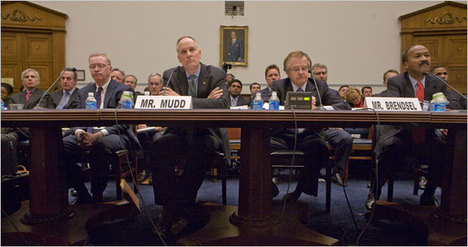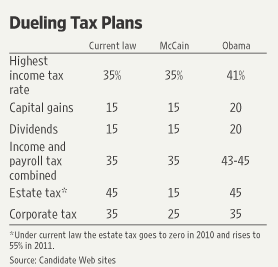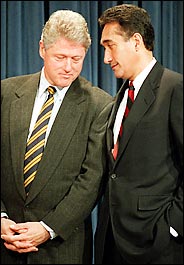 “Former heads of Fannie Mae and Freddie Mac testified in the House Tuesday: left to right, Richard Syron, Daniel Mudd, Leland Brendsel and Franklin Raines.” Source of caption and photo: online version of the NYT article quoted and cited below.
“Former heads of Fannie Mae and Freddie Mac testified in the House Tuesday: left to right, Richard Syron, Daniel Mudd, Leland Brendsel and Franklin Raines.” Source of caption and photo: online version of the NYT article quoted and cited below.
(p. B3) Fannie Mae and Freddie Mac engaged in “an orgy of junk mortgage development” that turned the two mortgage-finance giants into vast repositories of subprime and similarly risky loans, a former Fannie executive testified on Tuesday.
. . .
And in March 2006, Enrico Dallavecchia, Fannie Mae’s chief risk officer, wrote to Mr. Mudd to say, “Dan, I have a serious problem with the control process around subprime limits.”
Despite the concerns, Fannie Mae further increased its purchases of subprime loans, according to a January 2007 internal presentation.
Freddie Mac’s senior executives ignored similar warnings. Donald J. Bisenius, a senior vice president, wrote in April 2004 to a colleague that “we did no-doc lending before, took inordinate losses and generated significant fraud cases.”
“I’m not sure what makes us think we’re so much smarter this time around,” he wrote.
Housing analysts say that the former heads of Fannie Mae and Freddie Mac increased their nonprime business because they felt pressure from the government and advocacy groups to meet goals for affordable housing as well as pressure to compete with Wall Street.
For the full story, see:
LYNNLEY BROWNING. “Ex-Executive Faults Fannie and Freddie for Nonprime Loans.” The New York Times (Weds., December 10, 2008): B3.
(Note: ellipsis added.)








